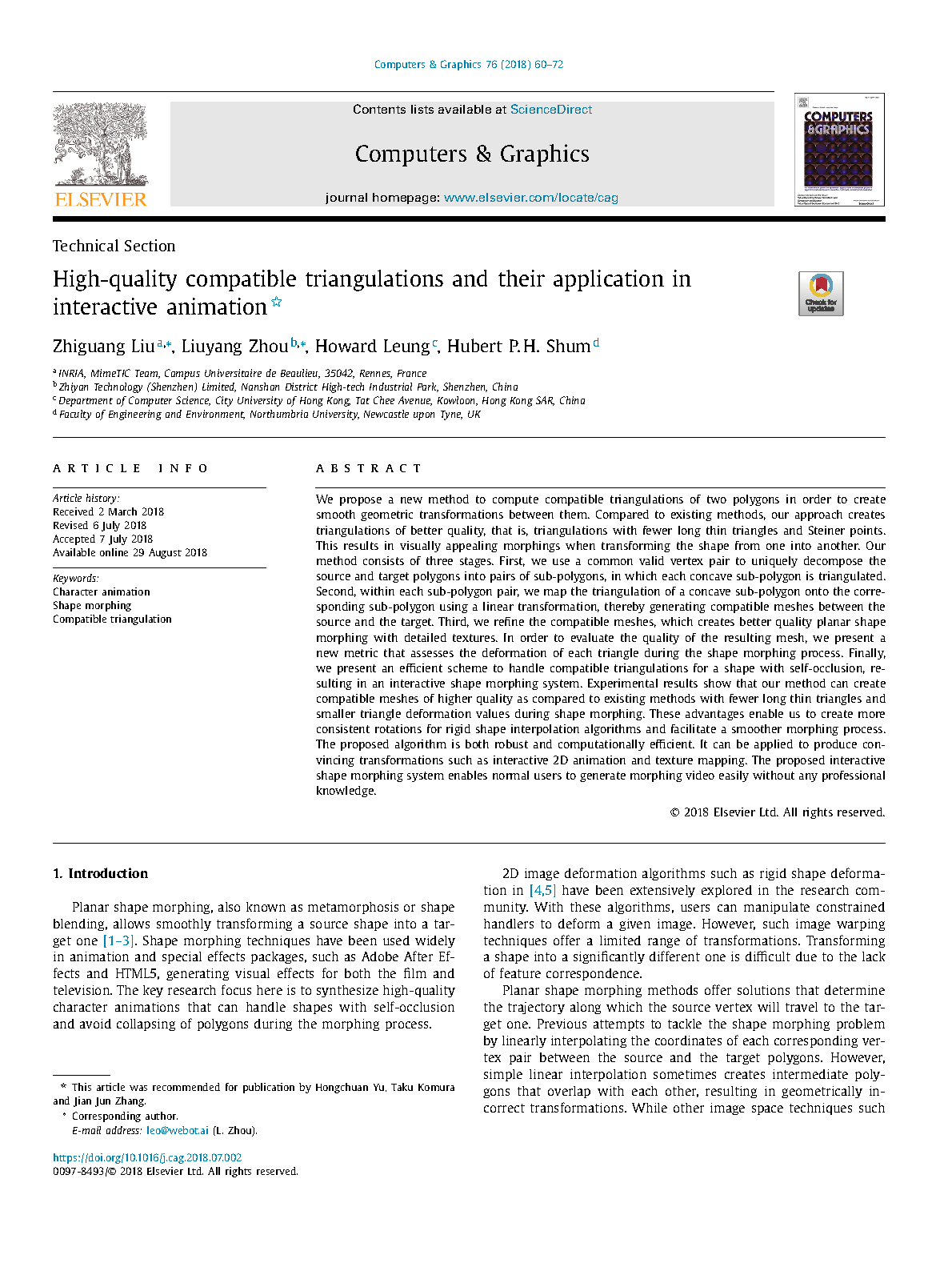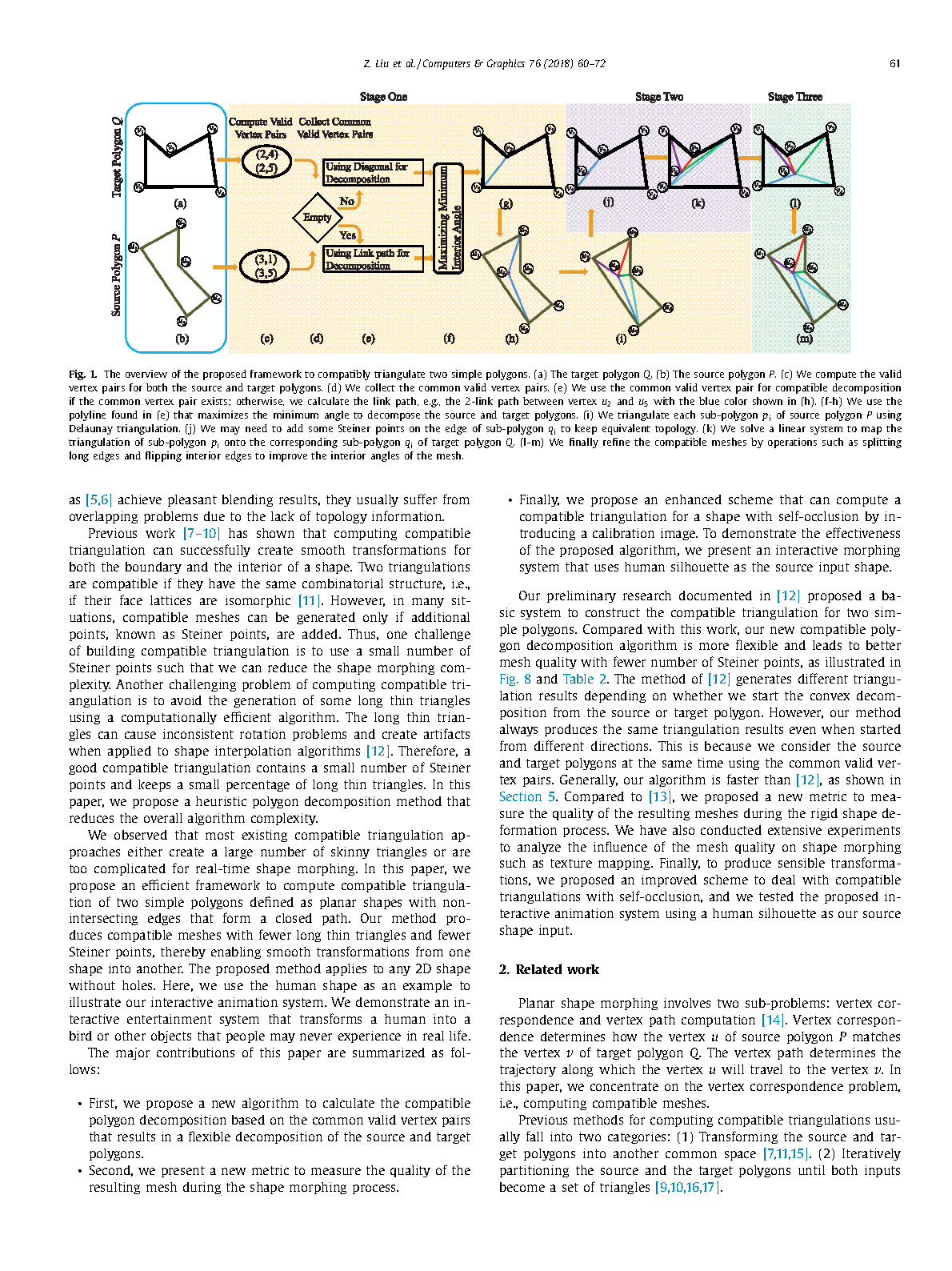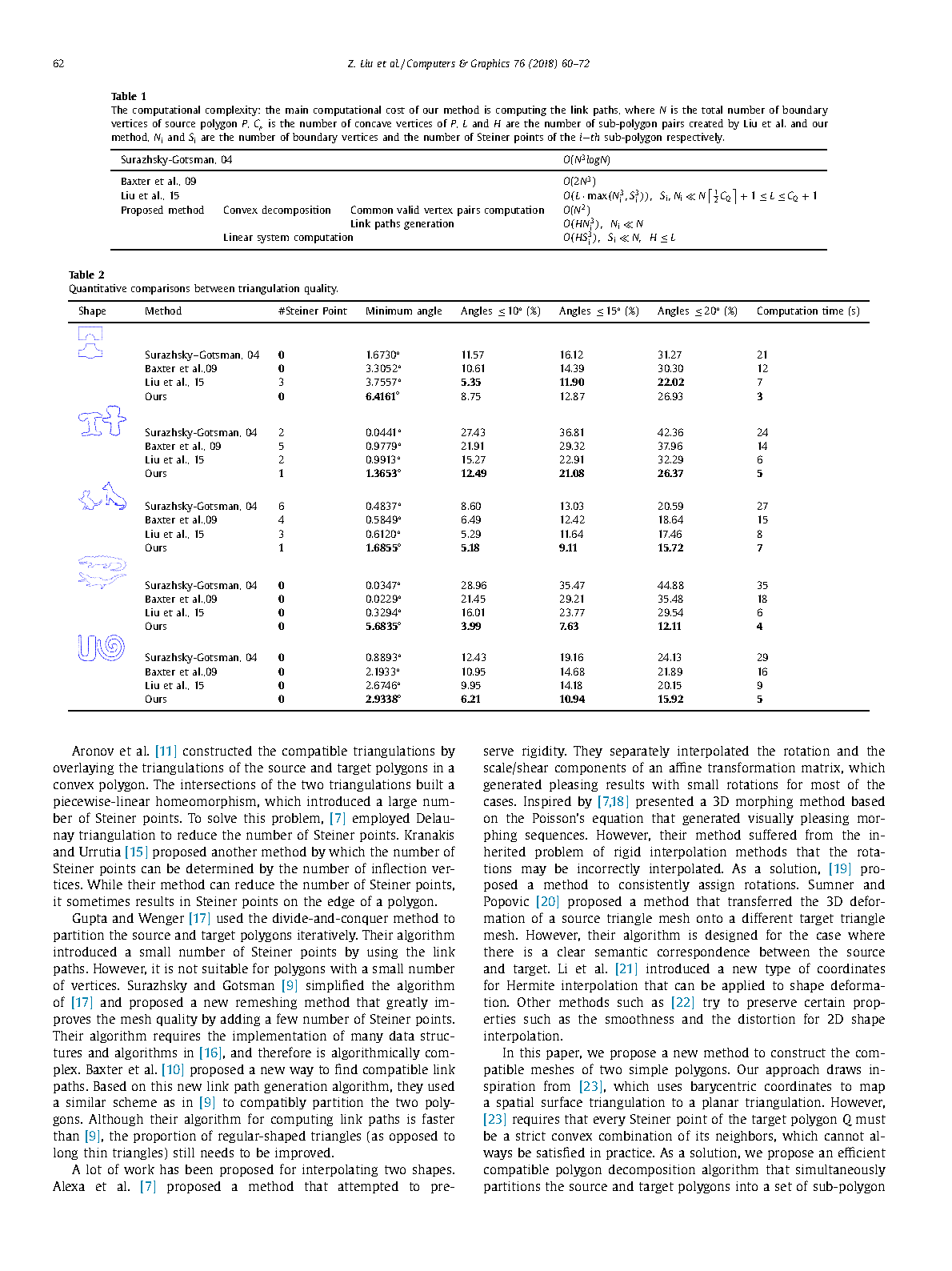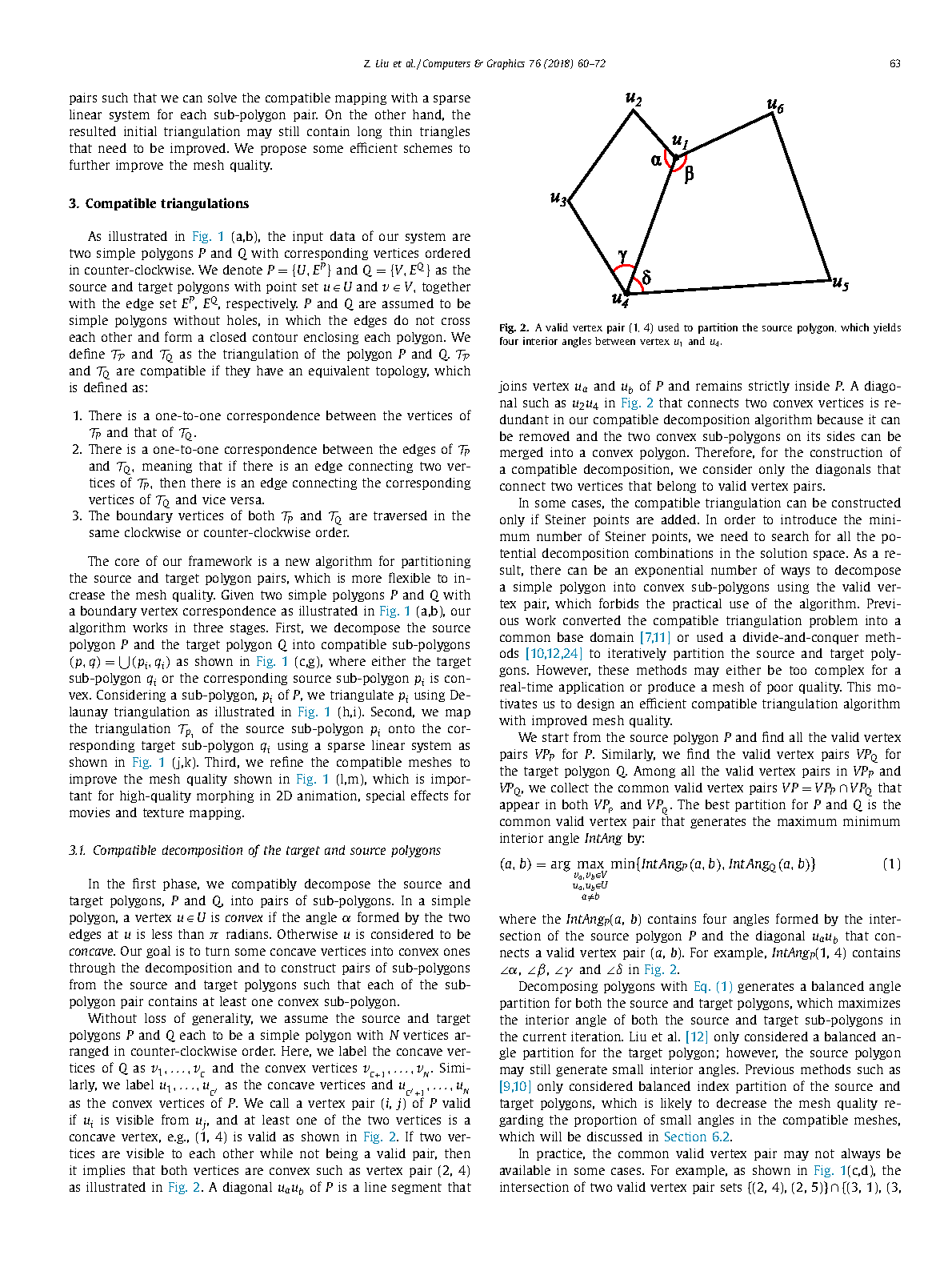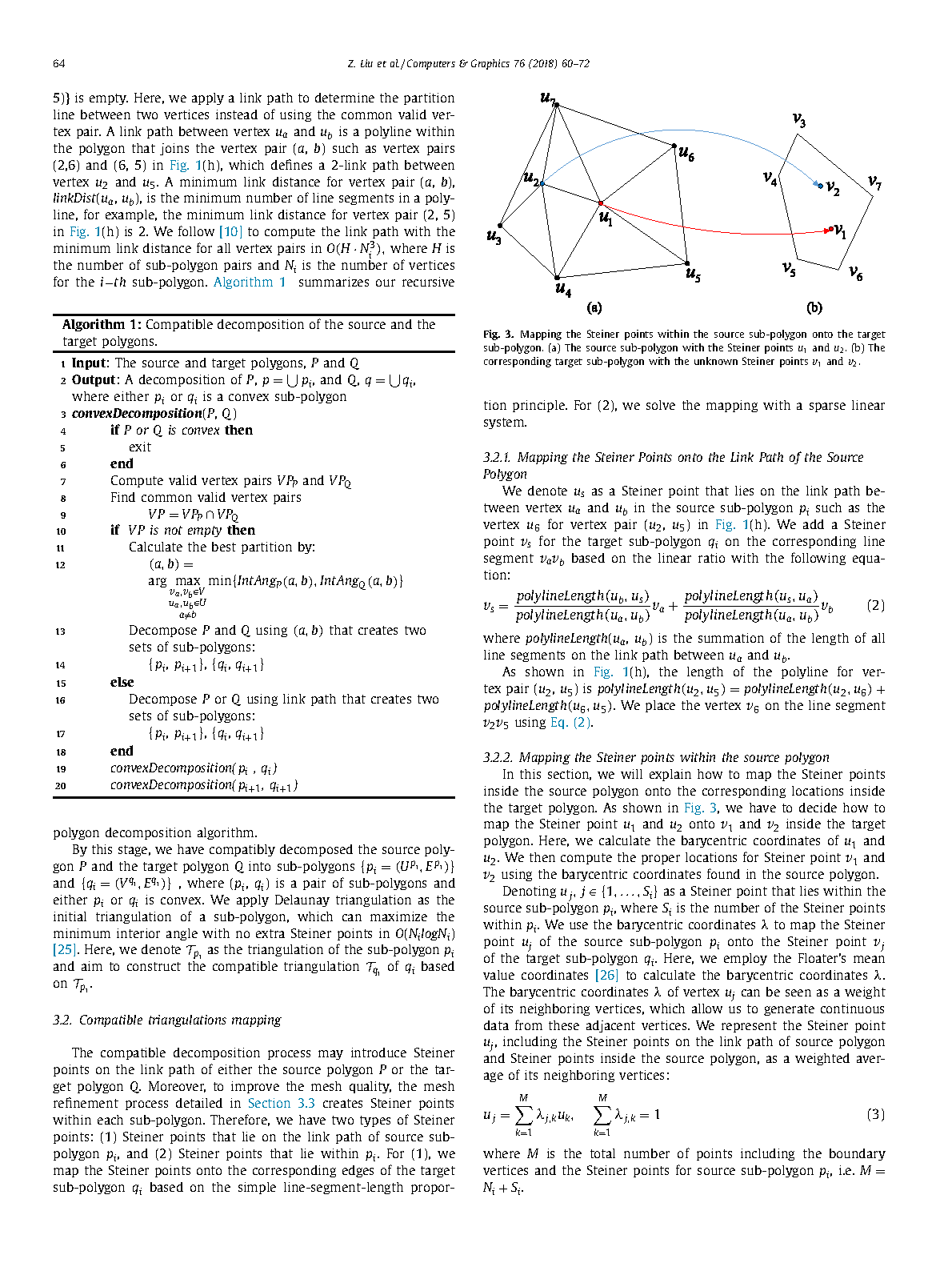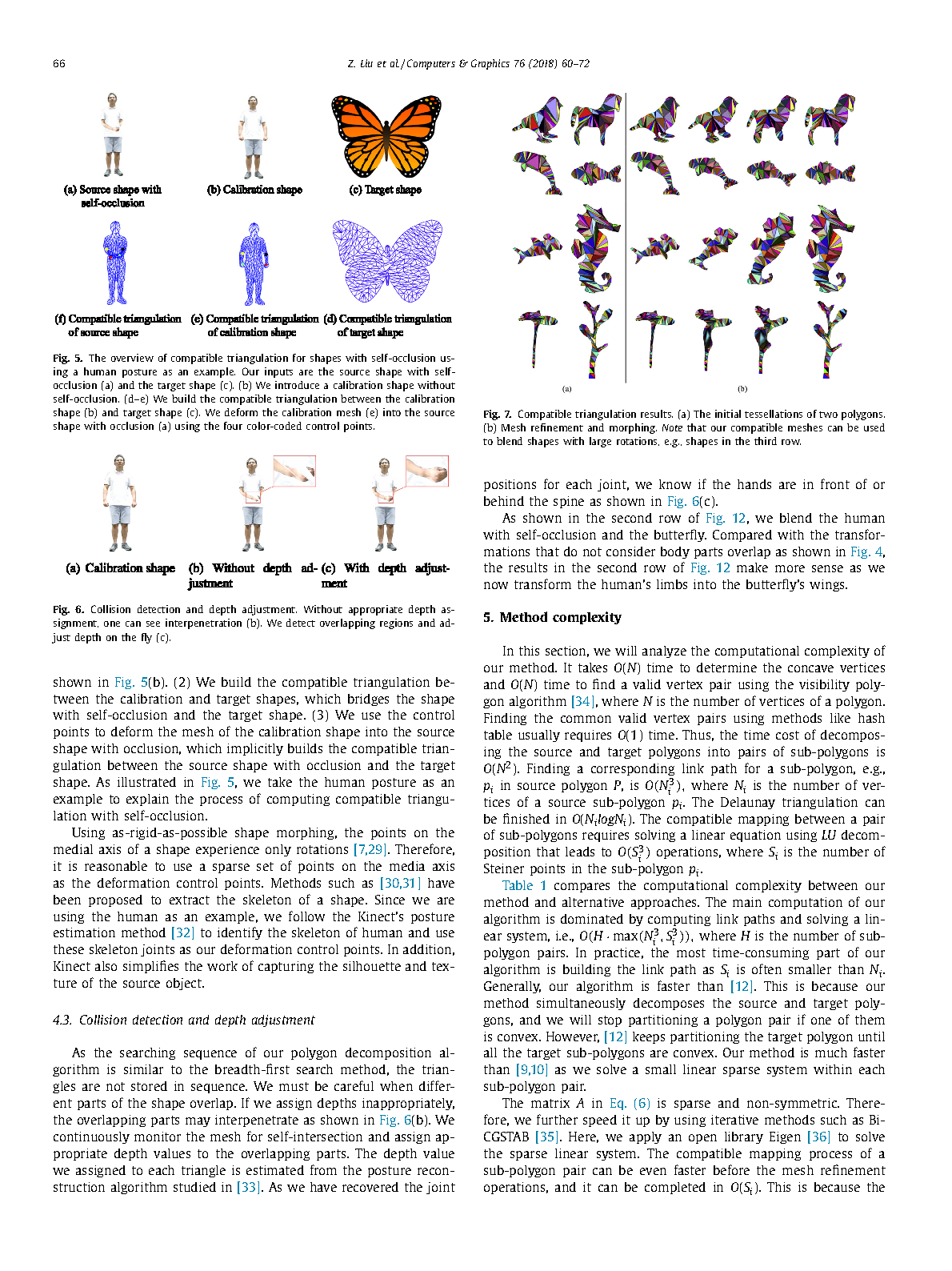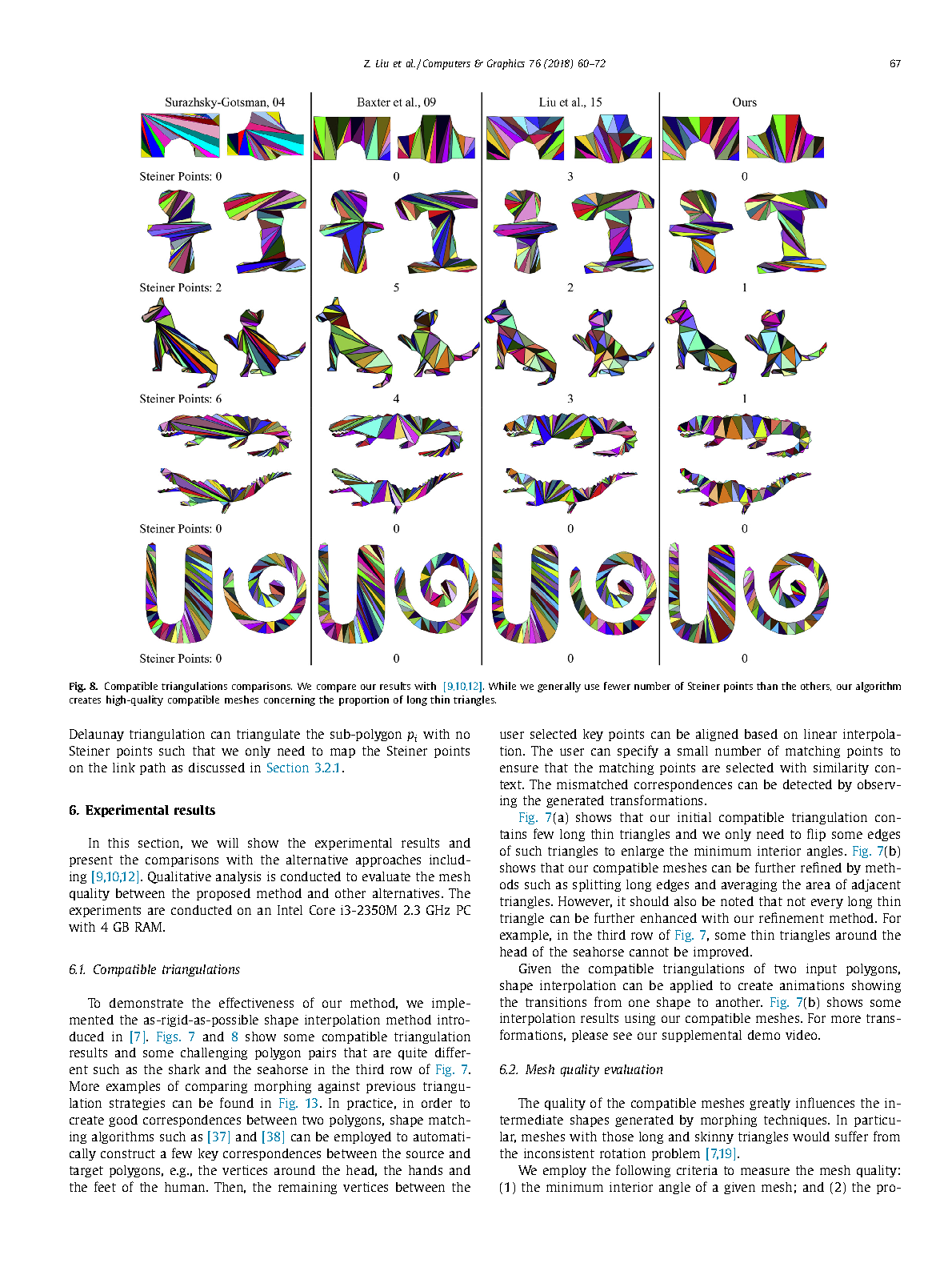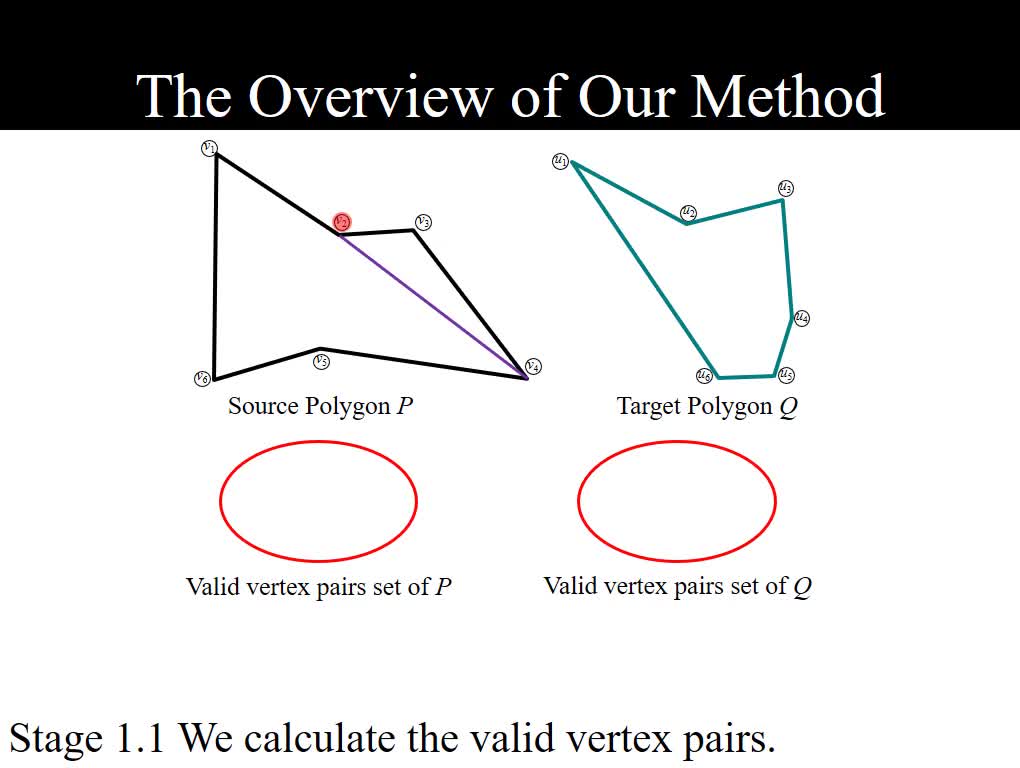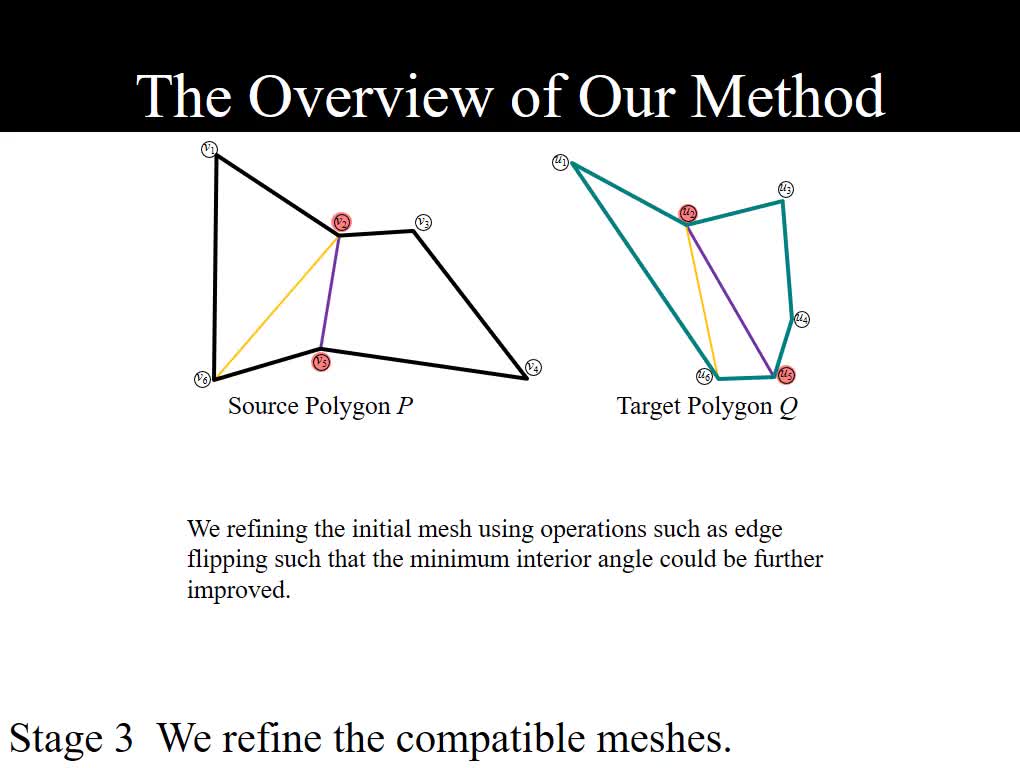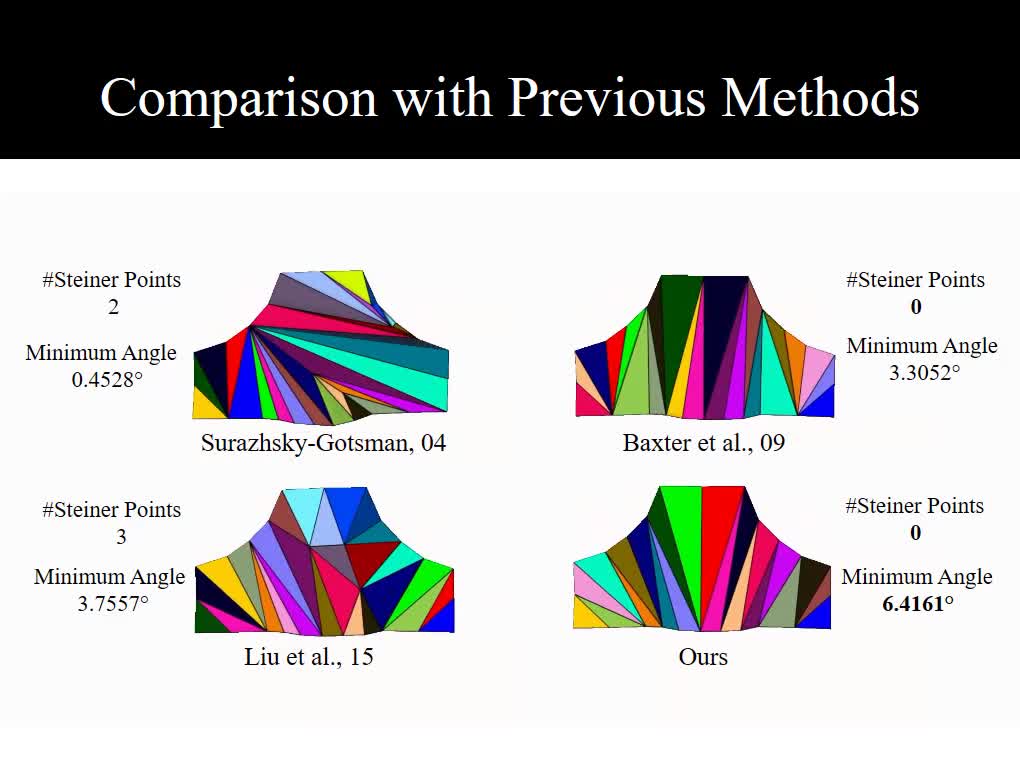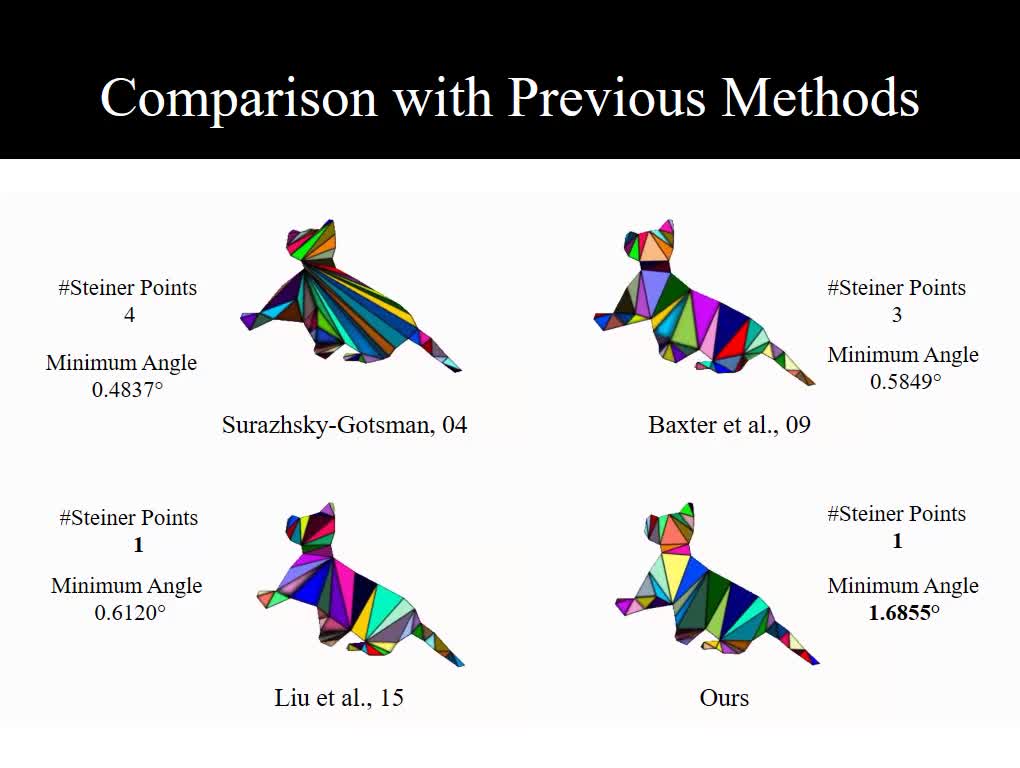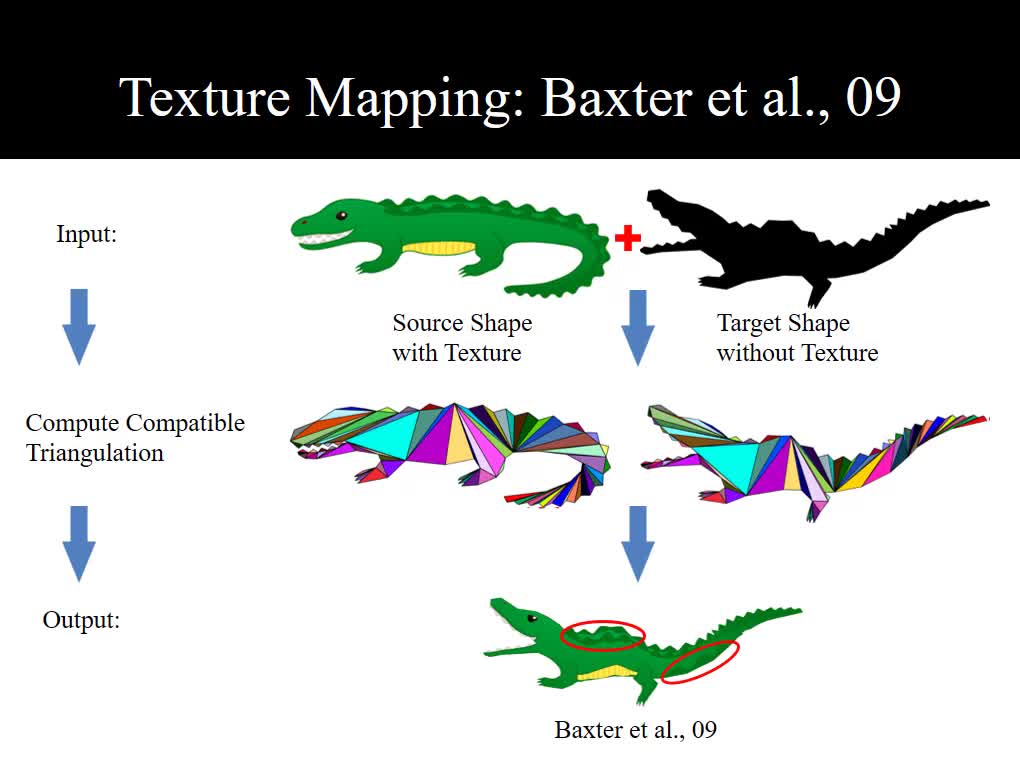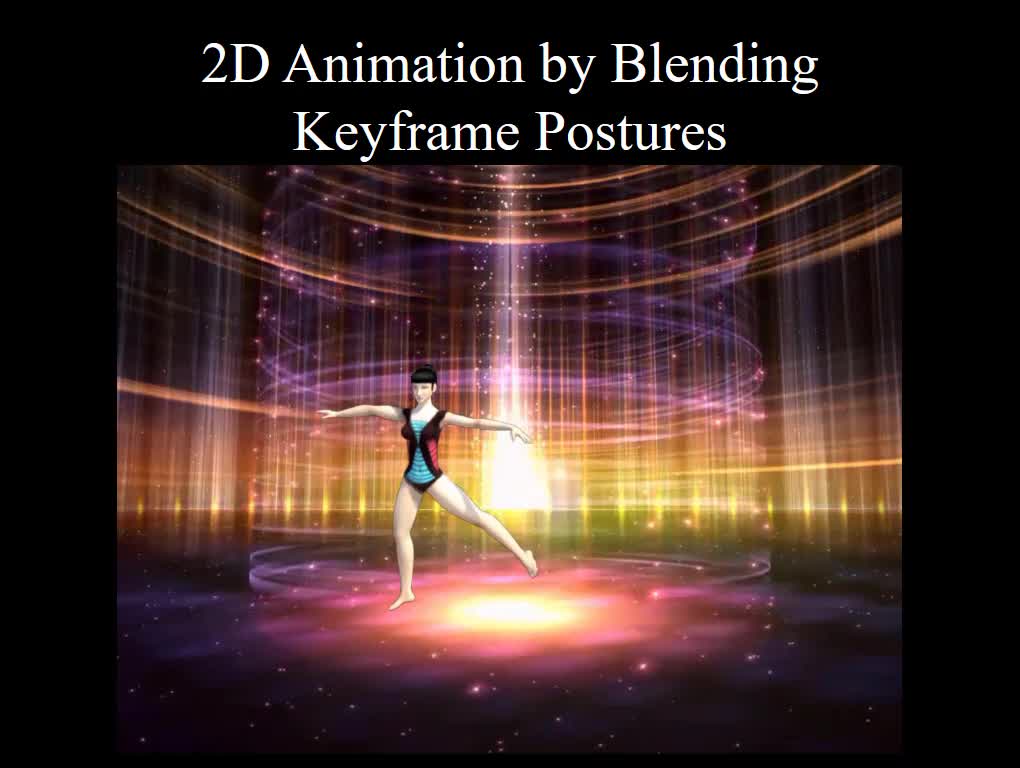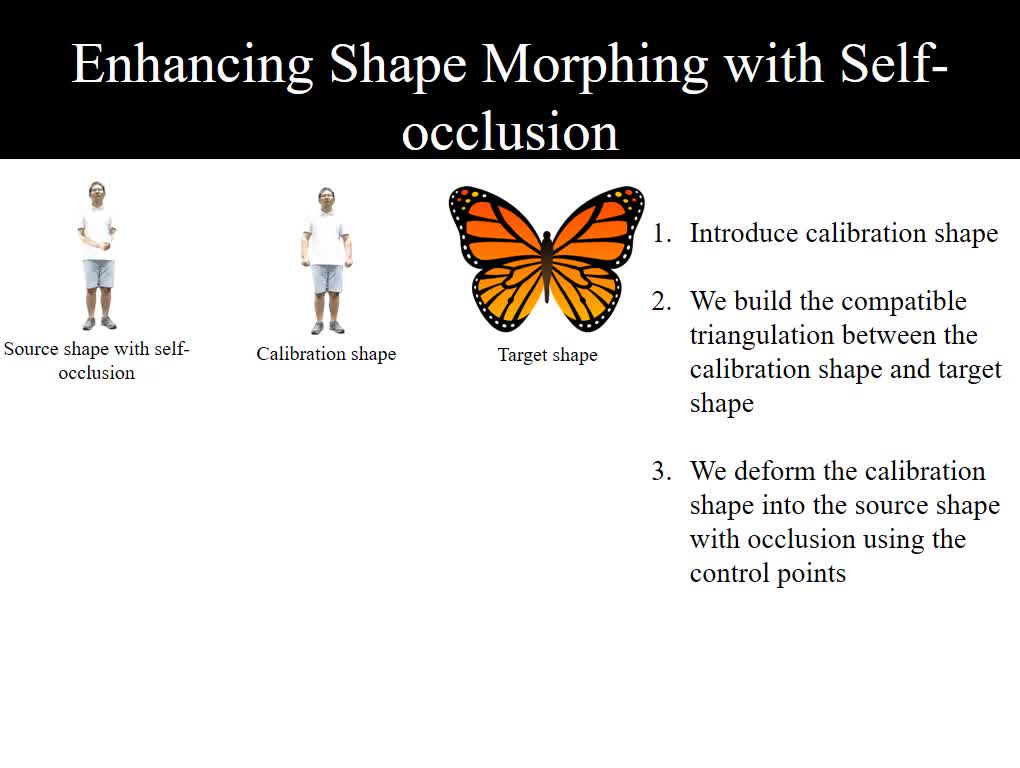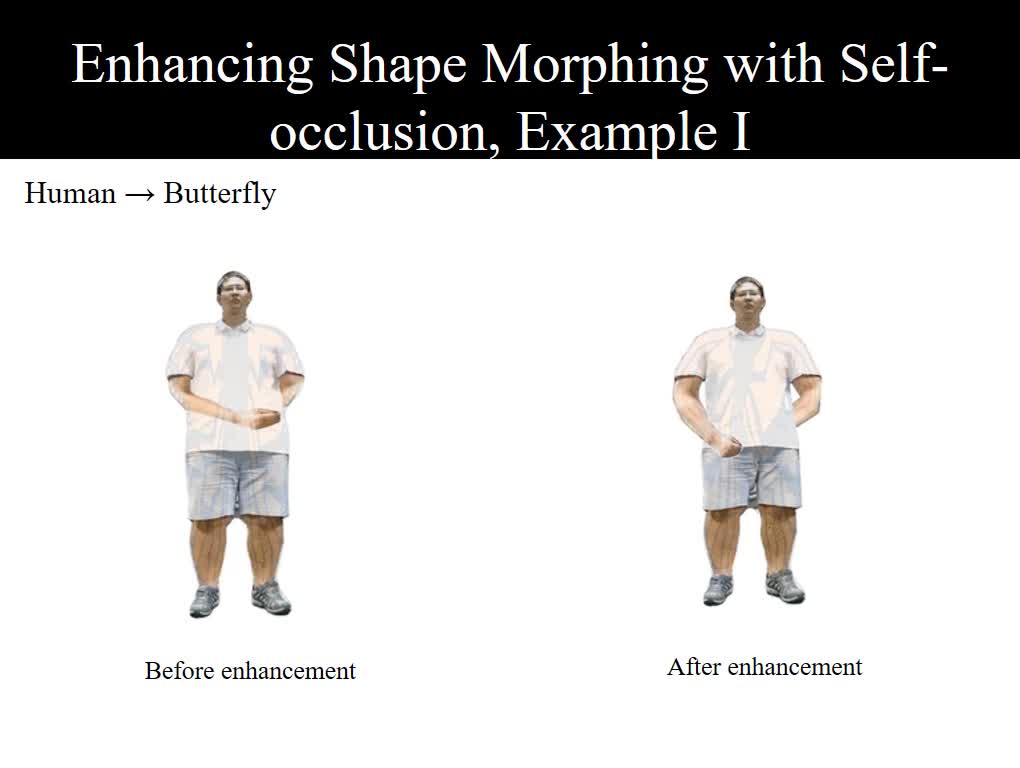High-Quality Compatible Triangulations and Their Application in Interactive Animation
Zhiguang Liu, Liuyang Zhou, Howard Leung and Hubert P. H. Shum
Computers and Graphics (C&G), 2018
Impact Factor: 2.8† Citation: 10#

Abstract
We propose a new method to compute compatible triangulations of two polygons in order to create smooth geometric transformations between them. Compared to existing methods, our approach creates triangulations of better quality, that is, triangulations with fewer long thin triangles and Steiner points. This results in visually appealing morphings when transforming the shape from one into another. Our method consists of three stages. First, we use a common valid vertex pair to uniquely decompose the source and target polygons into pairs of sub-polygons, in which each concave sub-polygon is triangulated. Second, within each sub-polygon pair, we map the triangulation of a concave sub-polygon onto the corresponding sub-polygon using a linear transformation, thereby generating compatible meshes between the source and the target. Third, we refine the compatible meshes, which creates better quality planar shape morphing with detailed textures. In order to evaluate the quality of the resulting mesh, we present a new metric that assesses the deformation of each triangle during the shape morphing process. Finally, we present an efficient scheme to handle compatible triangulations for a shape with self-occlusion, resulting in an interactive shape morphing system. Experimental results show that our method can create compatible meshes of higher quality as compared to existing methods with fewer long thin triangles and smaller triangle deformation values during shape morphing. These advantages enable us to create more consistent rotations for rigid shape interpolation algorithms and facilitate a smoother morphing process. The proposed algorithm is both robust and computationally efficient. It can be applied to produce convincing transformations such as interactive 2D animation and texture mapping. The proposed interactive shape morphing system enables normal users to generate morphing video easily without any professional knowledge.
